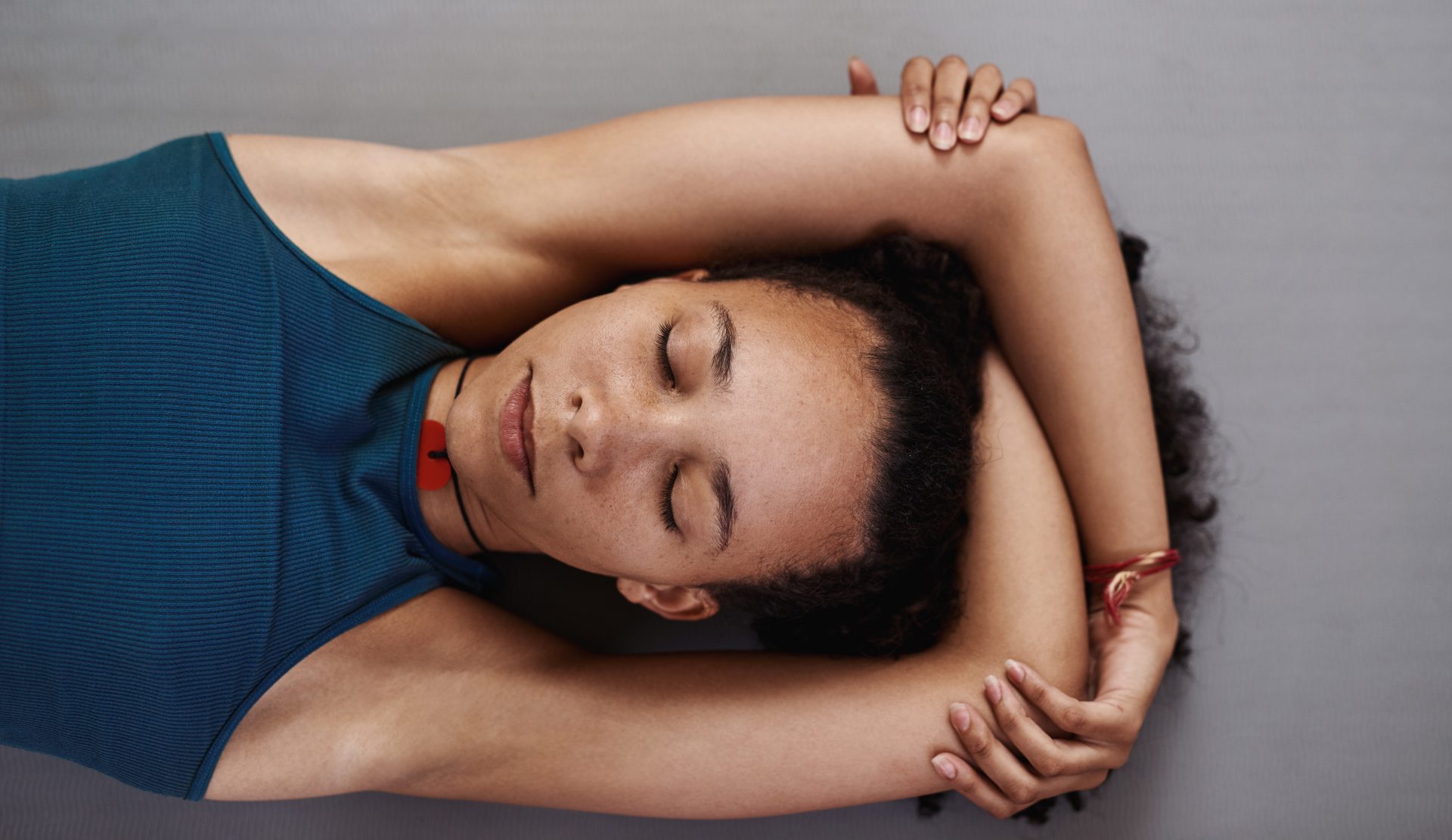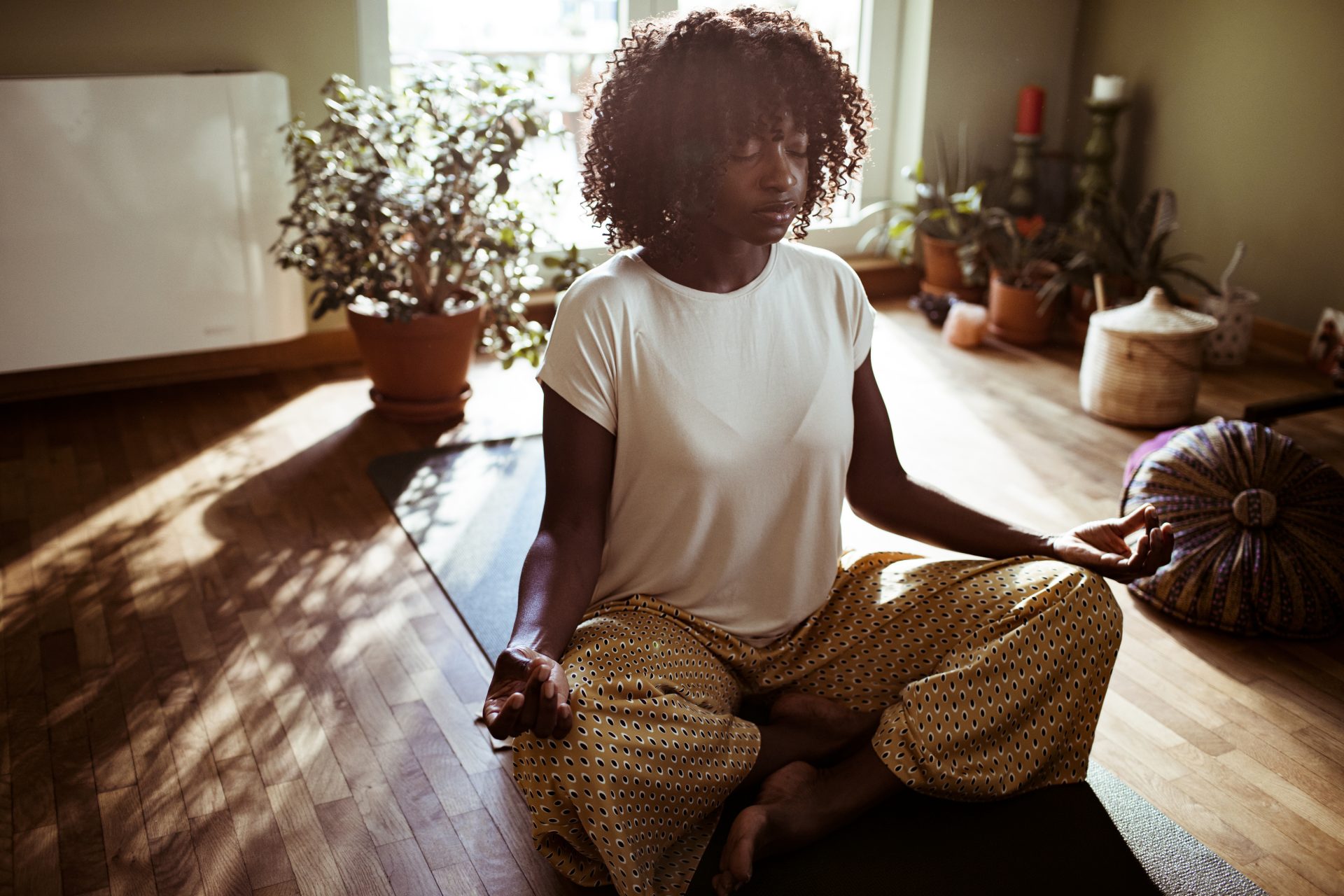When it came to meditating, writer Alice Barraclough was a skeptic, but keen to reap the benefits she kept hearing about. She tried different methods until she found one that did not involve sitting in silence.
I have a confession: I’ve always thought that meditation was a waste of time. I believed that sitting in silence was reserved for monks with gongs and gurus who collect healing crystals – not for busy people like me with barely enough time on their hands to read a book (let alone find ten minutes to sit still while trying to quiet my bustling thoughts). While I’ve grown to love yoga, meditation has always seemed a bit too ‘woo-woo’ for me. It was far easier to remain a sceptic and chalk meditation up to another wellness fad, than to actually take a moment to do, well, nothing.
My first ‘proper’ experience of meditation was a couple of years ago at an Ayurvedic retreat in Sri Lanka – where burnt-out creatives, over-stressed execs and soul-searching heartbroken millennials eagerly embraced the healing power of quieting their minds. I came to the retreat more interested in trying something new and exotic, rather than convinced it would enlighten me (I realise now that deep down, I was subconsciously yearning for solace).
During the grounding meditation and gong bath led by a Buddhist monk, I was so distracted by the mosquitoes feeding off of my flesh that I barely took in a single word the monk said about emptying my mind. Disheartened and frustrated, I left the meditation session more stressed out than when I had arrived.
But with everything that is happening in the world today, and with so much being out of our control, I kept wondering if meditation could be the key to maintaining my sanity throughout multiple lockdowns and pandemic fatigue.
I decided to give meditation one more chance – and to start by committing to just 10 minutes a day for 10 days.
You may also like
Meditation: Try working on your breathwork if you are struggling to meditate
After all, meditation is the topic of umpteen books, podcasts and apps. It’s praised by CEOs, business tycoons and celebrities alike – and even taught in some schools. And it’s not just the big wigs meditating – globally, between 200 and 500 million people meditate with the meditation app, Headspace, being downloaded over 65 million times.
Plus, it’s backed by reams of scientific research, with benefits including lowered blood pressure, reduced stress, improved cognitive functioning, and mitigated depression. In fact, research shows that meditation is the UK’s favourite form of wellbeing therapy, with over a quarter (26%) of UK adults saying they have meditated as a way to improve their mental wellbeing in the past five years.
“Meditation has been shown to be one of the most powerful ways to release stress and fatigue. This leaves you with more energy, clarity, and less tension. Sleeping improves. Anxiety levels reduce. Hormones are balanced and the immune system is strengthened,” says Jillian Lavender, Vedic Meditation expert and author of Why Meditate? Because it Works. “A few minutes of meditation will prepare you for the demands of your day – you’ll make better decisions, get through your to-do list, and be nicer to be around.”
So perhaps it was worth the try after all.
Day One
First, I downloaded Calm – the popular sleep and meditation app. There’s an array of guided sessions and ‘sleep stories’, plus individual exercises – such as breathing visualisations – and soothing ambient music. I chose the ‘rain on leaves’ nature melody and lasted for approximately 60 seconds before turning it off (listening to the rain only made me feel like using the loo). Not a great start.
Day Two
I decided to try the tales narrated by Stephen Fry and Joanna Lumley next (which are also on the Calm app). They’re full of descriptive prose, and transported me to the lavender fields of Provence and a safari across Chitwan National Park.
Yet while listening, my mind flitted between ‘What I should be doing?’ and ‘Is this really meditation?’ I didn’t feel ‘switched off’ and my mind certainly wasn’t cleared. Instead, it was whirling away to thoughts of travel and other distractions – too scrambled to focus.

Day Three
After a particularly stressful morning at work with deadlines eating away at my brain, I decided to close my laptop for 10 minutes and try to calm my nerves by reseting my mindset. I systematically tried to relax each part of my body, from my toes to my jaw (this is known as a body scan), but my mind continued to race. Meditation wasn’t getting any easier.
Day Five
I tried a guided meditation on Netflix (yes, you read that correctly) which is produced with the meditation app Headspace. Both my housemates had been raving about these 20-minute episodes billed as a beginner’s guide to meditation, so I decided to join them and see what all the fuss was about. Could this bite-sized and accessible way of meditating be the answer I was looking for?
“When was the last time that you did nothing?”the narrator asks. Does watching Married At First Sight Australia count as nothing? Probably not.
Using fun and bright animation, Headspace’s Guide to Meditation communicates psychological techniques through cheery visuals – it certainly makes meditation seem more novice-friendly and appealing. But when it came down to the actual practising part, I couldn’t help but look at my watch and think ‘I’m hungry, when is this over?’.
Sitting calmly and quietly, while attempting to stop my thoughts and focus on the present moment was excruciatingly painful. I needed help.
You may also like
Meditation helps our mental health by boosting our self-compassion, study suggests
Day Seven
Enter: music producer and DJ Carly Wilford who recently launched a:live – a monthly series of dynamic guided meditation tracks aimed at reimagining the way we view meditation.
“I’m just the same as you,” Carly tells me after I explain my ongoing difficulties with meditation and how, by nature, I like being busy and on-the-go.
“I love anything adrenaline-fuelled. I’m a DJ, so pre-Covid, I used to spend my life flying all over the world, from one gig to the next,” she says. “I’ve been meditating for around 15 years. The thing is, people get so confused because of the way it’s portrayed – it’s not about emptying your mind and stopping thinking. It should be used as a way to reset – like how you would use ‘Alt Ctrl Delete’ on your computer.”
So, if meditation isn’t about eradicating all thinking, what is it about?
“Forget everything that you thought you knew about meditation. It doesn’t have to be restricted to sitting still – I meditate on the tube, in the gym, or sometimes when I walk the dog,” Carly explains. “There are no rules.”
Carly says she launched a:live after witnessing first-hand the mental difficulties of her fellow musicians – referencing both Avicii and Caroline Flack.
“I realised that we need to do more to help one another. I wanted people to be able to wake up on the days when things didn’t seem so easy, and be able to jump on a:live and either find someone to talk to, or find a meditation that might help them. Meditation can be a simple tool when you’re having a stressful day or it can take you a lot deeper into the stuff that you want help with. I think that’s why it’s so amazing and powerful.”

Her advice to me? “Don’t have any expectations. Don’t go into it thinking, ‘I’m not allowed to think about anything’ or ‘I’ve got to do it a certain way’. Turn your phone to silent and make sure you’re cosy – grab a hot water bottle, a blanket or a favourite pillow and lie on your bed, the sofa or even the floor. It doesn’t matter where it is. It’s really nice to meditate outside, in the park, on a walk, or even in the bath. But pick the right time to do it.”
Day Eight
I decided to follow Carly’s advice. That night, I ran a bath, lit my favourite Diptyque candle and floated to a ten-minute meditation called ‘A Space to Create’.
I’m not sure if it was the fact that Carly’s voice seemed so ‘normal’ – like I was listening to a mate rather than some non-relatable wellness guru promising me enlightenment – or that I was so relaxed while submerged in steaming hot water, but I actually closed my eyes and managed to connect with my own breath.
10 minutes flew by as Carly gently explained how so much of life is built on love and the feeling of being loved helps us to build the things that we are working towards. I was suprised to find that I ended the meditation feeling calm, content and loved – and actually enjoyed the experience.
Day Nine
While scrolling on Fiit looking for a strength workout, I noticed that they also offer breathwork classes. Although I couldn’t manage an entire 25 minute session, I also couldn’t stop thinking about how had Carly urged me to tear up the rulebook around meditation. It led me to wonder whether anyone else felt the same.
You may also like
Mindful running can help to boost the mental health benefits of exercise – here’s how
It turns out, Fiit trainer Ida May agrees: “You can experience meditation in various different ways and places. There is no one way or right technique to do this. Flowing into the sound of your breath during yoga is quite meditative, running takes me into that reflective zone, swimming in the icy sea down in Brighton is like meditation to me. Some people say cooking can be meditative too.”
Day Ten
The next morning, I went on a run before work and decided to ditch my headphones. After a couple of kilometres, I got into my usual flow – a meditative state – and something clicked: maybe running is my form of meditation. All this time I’ve been struggling to sit still, forcing myself to focus on just one thing or eliminate my thoughts completely – when, just as Ida says, “meditation can take place in other forms”.
Meditation, it turns out, can be whatever you want it to be. If listening to gentle music in the bath or being completely present during a run is the key, I guess I could possibly handle 10 minutes every now and then. So do what feels right for you and I’m sure you’ll reap the benefits.
IMAGE: Unsplash
Follow @StrongWomenUK on Instagram for the latest workouts, delicious recipes and motivation from your favourite fitness experts.
Source: Read Full Article
